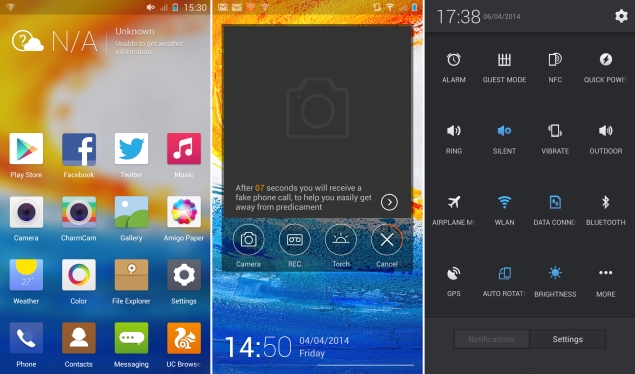HTC has launched his premium smartphone of this year. HTC has launched some great smartphones - last year's HTC One being the most obvious example. But none of them have really managed to become popular.
HTC's aesthetic is still miles ahead of the competition, though. The M8's front face is minimalistic and clean, with only a small silver company logo breaking from the dark glass and metal. There are grilles above and below the screen for HTC's trademark BoomSound speakers, and the notification LED is as usual hidden behind the upper one. Thanks to a switch to on-screen buttons, the M7's awkward two-button setup has been dispensed with.
Features and specifications
The M8 comes with Qualcomm's latest and greatest Snapdragon processor, the 801. This is a slight speed bump over last year's flagship Snapdragon 800.
Interestingly, the M8 in India has a higher clock speed; 2.5GHz as opposed to 2.3GHz in other markets. HTC says this is because Indian consumers are more concerned about specifications.
The HTC One (M8) comes with 2GB of RAM and 16GB of built-in storage, which can be expanded to 128GB using a microSD card. The battery is rated at 2,600mAh, which is adequate. Wi-Fi b/g/n/ac and Bluetooth 4.0 are standard, and there's also an infrared emitter and receiver, FM radio, and the usual array of sensors.
The 5-inch 1080x1920-pixel screen is noticeably larger than the M7's 4.7 inch.
The M8 runs on latest Android 4.4.2, with HTC's Sense 6 interface on top. This version of Sense is definitely more minimalist than previous versions.
HTC doesn't say much about the specifications of the second camera, and indeed you can't record pictures or videos through it. It's much more of a sensor, and is included in order to add extra context to photos taken with the primary camera. You won't get stereoscopic 3D effects on photos, but you will be able to make some very neat edits, which aren't possible with regular cameras or even regular PC software.
This is our first opportunity to benchmark a device based on the new Snapdragon 801, since Samsung launched only the Exynos-based variant of its Galaxy S5 in India. While the Exynos has four high-powered and four low-powered cores, the Snapdragon has only four, but more powerful and running significantly faster.
The Galaxy S5 and the One (M8) showed different strengths, it was the M8 that came out on top. Qualcomm's advantage over other ARM-based processor vendors has so far been graphics, and we saw that continue to be the case despite Samsung's impressive work with its in-house processors.
Verdict
The HTC One (M8) is not a radical departure from last year's HTC One. It's a solid update, but isn't new or exciting, and definitely isn't worth upgrading to if you currently use any of last year's premium phones.
The M8's major competition will come from Sony's Xperia Z2 and Samsung's Galaxy S5, both of which offer similar or better specifications. The M8 will have to rely on its premium build quality and camera gimmicks to appeal to buyers, and perhaps a price cut sometime mid-lifecycle. Meanwhile, Samsung and Sony are experimenting with waterproof bodies, heart rate sensors, 4K video recording, fingerprint readers, smart accessories, and much more.
Ultimately, despite being a fantastically crafted phone that works really well, the M8 will appeal only to those who either place a high value on design, or seriously dislike Samsung and Sony. We're less enthusiastic about the M8 than we are about the inevitable price cut the M7 will receive. HTC seriously needs a reinvention, and the One (M8) is not it.
Price Around Rs.49990
Key Specification:
Display 5.00-inch






























